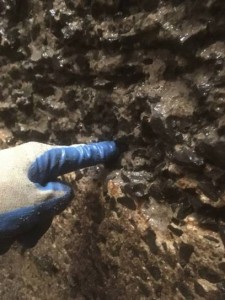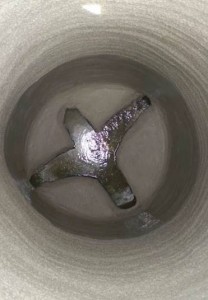Durable corrosion protection for rehabilitated infrastructure
Concrete is subject to a number of mechanisms in water and wastewater environments that cause it to deteriorate and corrode, weakening the structure and leading to reduced performance and service life. Here, we take a look at some of the mechanisms that commonly cause corrosion in concrete.
Causes of corrosion
Acidophilic bacteria feeds on sulfur from H2S gas and release sulfuric acid which can corrode concrete, mortar, steel, and ductile iron. In the most severe cases, bacterial activity can destroy up to 25mm of concrete per year.
Flowing substances
Substances that flow through structures, such as water, contain waterborne silt, sand and other debris that can cause erosion when they come in contact with the concrete.
Chemicals
Chemical attack from carbonation, chlorides and other aggressive agents, such as acids and low pH water, dissolve and penetrate concrete, causing it to crack, spall and weaken.
Humidity
Higher levels of humidity at the location of the structure increases the moisture and pH levels of the concrete, speeding up the deterioration process.
Freeze-thaw cycling
Freeze-thaw cycling causes cracking, spalling, surface scaling and joint deterioration. This damage occurs when water molecules in concrete freeze and expand beyond the concrete’s volume constraints.
If assets are left untreated and unprotected, continued attack from these elements can lead to infrastructure failure that will be expensive to repair or replace.
Protect your assets
According to Richard Arthur, Head of Regional Servicing at FITT Resources, protective coatings have been used with much success on water assets, and on wastewater infrastructure that is subject to highly aggressive fluids. Coatings protect the structure this by creating a barrier between the fluid and the concrete that stops the concrete from absorbing or reacting to it.
“Australia is facing the problem of aging concrete infrastructure in the water and wastewater industries, with corrosion and deterioration of concrete one of the key concerns,” Mr Arthur said.
“It is important for asset owners to look at ways to rehabilitate this infrastructure to stop corrosion from spreading, increase its longevity, reduce further rehabilitation costs, and reduce the risk and costs of rebuilding in the instance of asset failure.
“Protective coatings such as SewperCoat are ideal for rehabilitation, particularly of wastewater infrastructure, as it has been designed specifically to be durable under such conditions.”
SewperCoat is a mortar designed to provide exceptional resistance to biogenic corrosion environments. It is made from calcium aluminate which has a ‘bacteriostatic effect’ on acidophilic bacteria. The metabolism of this bacteria is inhibited on calcium aluminate surfaces, thus maintaining the pH level of concrete above three.
Key advantages of SewperCoat include:
- Inhibits bacterial activity
- Neutralises sulfuric acid
- Easy monolithic installation
- Provides long-term corrosion protection
- Contains no VOC’s
- Readily adheres to damp concrete surfaces
- High early strength and high abrasion resistance
- Restores structural integrity
- Creates a solid barrier to infiltration
- Economical to apply, and cost effective in the long term
- Lasts for generations
- Supports sustainable development
SewperCoat can also be used to rehabilitate infrastructure that has been damaged over years by biogenic corrosion or can provide a protective lining for new infrastructures.
“We use SewperCoat for rehabilitation projects because it is unique compared to other protective coatings such as ordinary portland cement (OPC) concrete, epoxies, polyvinyl chloride (PVC) or polyethelene because of its ability to inhibit bacterial activity, which drastically reduces the production of sulphuric acid,” Mr Arthur said.
“We work closely with the water and wastewater industry from inspection through to refurbishment, so we have seen how well SewperCoat has performed in these environments and have used it to successfully rehabilitate numerous assets.”



